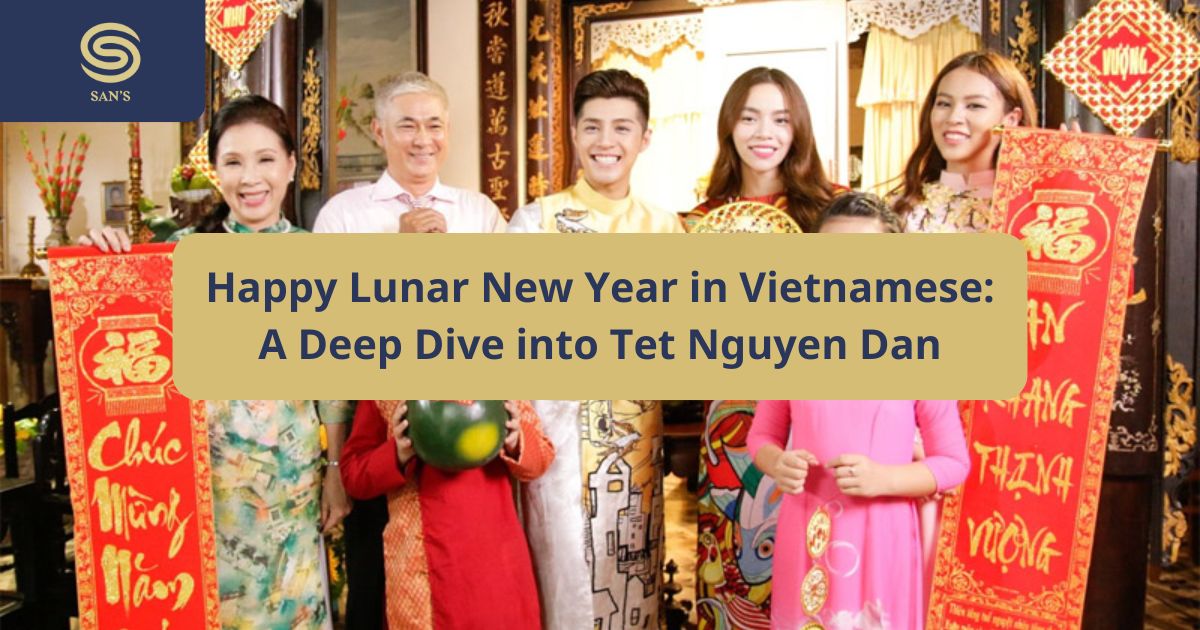The Vietnamese Lunar New Year Food, or Tết, is a vibrant celebration deeply rooted in tradition, and food plays a central role. It’s a time for family reunions, honoring ancestors, and welcoming the new year with feasts that symbolize prosperity and good fortune. Much like how a touch of refinement can enhance one’s appearance, the care and preparation put into Vietnamese Lunar New Year Food elevate this holiday to a truly special experience. If you’re considering other ways to refine your appearance, perhaps you might be interested to know about giá tiêm filler cằm, but let’s dive deep into the delicious world of Tết.
Vietnamese Lunar New Year Food: A Feast of Tradition and Culture
What is the Vietnamese Lunar New Year (Tết)?
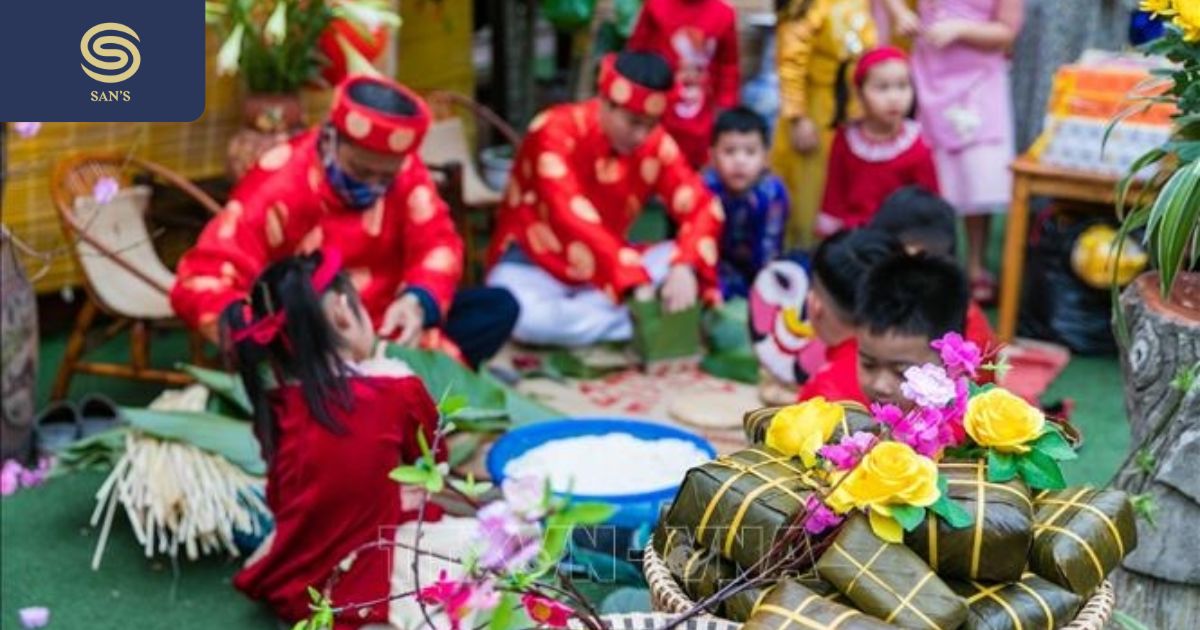
The Vietnamese Lunar New Year, known as Tết Nguyên Đán, or simply Tết, is the most significant and festive holiday in Vietnamese culture. This is not merely a celebration of a new calendar year; it’s a profound cultural event, marking the beginning of spring and a time of renewal. Tết transcends the concept of a simple holiday; it’s a multi-day festival deeply entwined with customs, traditions, and spiritual significance. Families come together, often traveling great distances, to celebrate and honor their ancestors, ushering in the new year with hope and joy. This period is steeped in symbolic rituals and, most importantly, is a time to partake in the traditional Vietnamese Lunar New Year Food.
The importance of Tết extends beyond the mere calendar change. It’s a time for expressing gratitude for the past year, reflecting on family ties, and offering wishes for a prosperous and healthy future. The vibrant energy of Tết can be felt in every corner of Vietnam, from the bustling streets adorned with colorful decorations to the warm, intimate family gatherings. At the heart of all these festivities, Vietnamese Lunar New Year Food takes center stage, playing a crucial role in shaping the holiday’s identity.
The Connection Between Food and the Celebration of Tết
Food is far more than sustenance during Tết; it is an integral part of the cultural narrative. Each dish prepared and shared during the holiday holds deep symbolism and reflects the values cherished by the Vietnamese people. The meticulous process of creating these traditional dishes is an act of love and dedication, further strengthening family bonds. The aromas that fill the home during Tết are not only tantalizing but also carry with them the promise of good fortune, happiness, and prosperity for the year ahead. The Vietnamese Lunar New Year food is a language of its own, speaking volumes about the rich culture and heritage.
Overview of Traditional Vietnamese Tết Food
The array of dishes that make up the Vietnamese Lunar New Year food landscape is truly breathtaking. Every meal, every snack, and every sweet treat is carefully prepared with the finest ingredients and a deep understanding of its cultural significance. These foods aren’t just meant to be eaten; they are meant to be experienced. They are shared with family, offered to ancestors, and gifted to friends. The preparation often begins well in advance of Tết, highlighting the level of dedication and commitment involved. These dishes are more than just food; they are a testament to the richness and diversity of Vietnamese culture.
The Vietnamese Lunar New Year food often carries symbolism, with colors, ingredients, and even shapes all holding significant meaning. Some foods represent prosperity, others good luck, and still others longevity and health. This understanding deepens the appreciation for these dishes and reinforces their importance in the grand tapestry of Tết. The sharing and enjoyment of these foods are not merely a physical act; they are an expression of cultural pride and unity, fostering a sense of community and belonging.
Iconic Dishes of Vietnamese Lunar New Year
Bánh Chưng and Bánh Tét
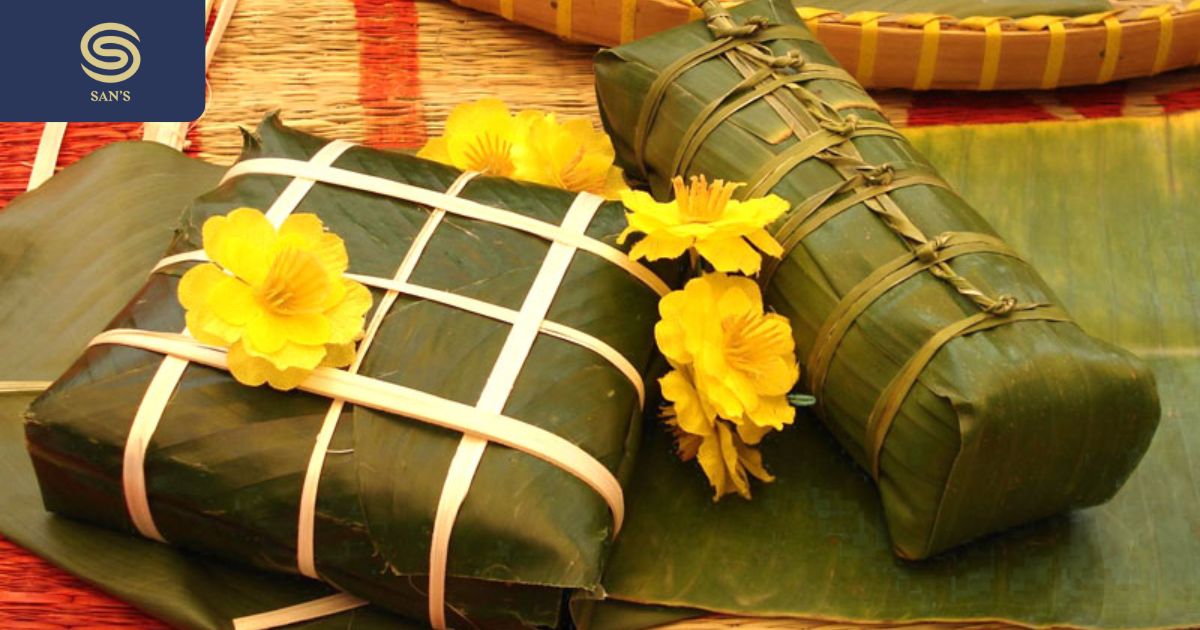
These sticky rice cakes are the quintessential Vietnamese Lunar New Year food. Bánh Chưng, a square-shaped cake, and Bánh Tét, a cylindrical version, are made from sticky rice, mung beans, and pork, wrapped in layers of fragrant banana leaves. Bánh Chưng, a cornerstone of Vietnamese Lunar New Year food, holds a very special place in the heart of this celebration.
The cooking process itself is a time-honored tradition. Families often gather for many hours to prepare the ingredients, pack and wrap the cakes, and then cook them for many hours, fostering bonding and shared memories. The cakes are not only delicious, but also a symbol of earth and sky, representing the universe in Vietnamese culture. Similarly, Bánh Tét, another staple in Vietnamese Lunar New Year food, is appreciated for its taste and symbolic meaning.
The process of making these iconic cakes is an event in itself, bringing generations together to participate in a cherished tradition. The fragrance that fills the air as the cakes are cooked is simply irresistible and is something that every Vietnamese person associates with Tết. These cakes are more than just food; they are a symbol of tradition, family unity, and cultural pride. Bánh Chưng and Bánh Tét are undoubtedly among the most iconic and indispensable elements of the traditional Vietnamese Lunar New Year food.
Pickled Vegetables (Dưa Món)
Dưa Món, or pickled vegetables, is an essential component of the traditional Vietnamese Lunar New Year food. These crunchy, tangy pickles are made from radish, carrots, and other vegetables, offering a refreshing contrast to the richness of many other Tết dishes. Pickled vegetables play a crucial role in balancing the palate and stimulating appetite. This balance is crucial to enjoy the variety of Vietnamese Lunar New Year food without feeling overwhelmed. The pickling process allows the vegetables to be preserved, which is helpful during the long Tết holiday. These pickled vegetables are a testament to the resourcefulness of Vietnamese cuisine.
The vibrant colors of the pickled vegetables add visual appeal to the Tết feast, further enhancing the festive atmosphere. The tangy taste acts as a palate cleanser, preparing the taste buds for the next course. This important component of Vietnamese Lunar New Year food is a delicious reminder of how culinary traditions can be both practical and delightful. It’s an indispensable part of the meal, without it many of the other dishes would feel heavier.
Vietnamese Braised Pork with Eggs (Thịt Kho Tàu)
Thịt Kho Tàu, a comforting and flavorful braised pork dish, is a favorite during the Vietnamese Lunar New Year food. The pork belly, along with hard-boiled eggs, is slow-cooked in a rich broth made from coconut juice, fish sauce, and other seasonings, resulting in a savory and slightly sweet dish. This dish is a staple of Vietnamese Lunar New Year food, enjoyed by families across the country. The slow cooking process makes the pork incredibly tender and flavorful. Each bite of this dish is rich, flavorful, and deeply satisfying.
This dish, often prepared in large batches, is a symbol of abundance and is meant to be shared with family and friends. The rich, savory taste makes it a crowd-pleaser and a highlight of the Tết celebration. The preparation of this dish often takes several hours, which highlights the effort and care that goes into preparing traditional Vietnamese Lunar New Year food. It’s a dish that evokes a sense of warmth and togetherness, making it an important component of the holiday.
Sticky Rice Variations (Xôi)
Xôi, or sticky rice, is a versatile dish that comes in a variety of colors and flavors. Xôi Gấc, made with the Gấc fruit, boasts a vibrant red color, symbolizing good luck and prosperity, making it a perfect part of Vietnamese Lunar New Year food. Xôi Đậu, made with beans, is another popular version, often served with savory accompaniments. Sticky rice plays an important role in the culinary landscape of Vietnamese Lunar New Year food. It is considered a staple food for the holidays. The variations in color and taste make it a versatile part of the feast.
The symbolic meaning associated with colors, especially the bright red of Xôi Gấc, makes this dish a meaningful offering during the New Year celebration. Xôi is often served alongside savory dishes, providing a textural contrast and a satisfying complement. The different variations of Xôi showcase the creativity and resourcefulness of Vietnamese cuisine, making it a beloved dish during the festive season, and making it an important food of Vietnamese Lunar New Year food.
Candied Fruits and Seeds (Mứt Tết)
Mứt Tết, or candied fruits and seeds, are sweet treats that are a must-have during the Vietnamese Lunar New Year. These include candied coconut, ginger, kumquat, lotus seeds, and many more. These sweets are offered to guests and are enjoyed throughout the holiday season. The variety and delicate flavors of the candied fruits and seeds are an important part of the Vietnamese Lunar New Year food. These treats are not just tasty; they represent good luck and hospitality.
These colorful and flavorful treats are often beautifully presented and are offered to guests as a symbol of welcome and good wishes. The tradition of making these candied treats is often passed down through generations, making it an important cultural practice. Mứt Tết adds a sweet touch to the festive atmosphere of Tết and serves as a delicious reminder of the sweetness of life and the joy of shared moments, solidifying its place as an important element of Vietnamese Lunar New Year food.
Food Customs and Practices During Tết
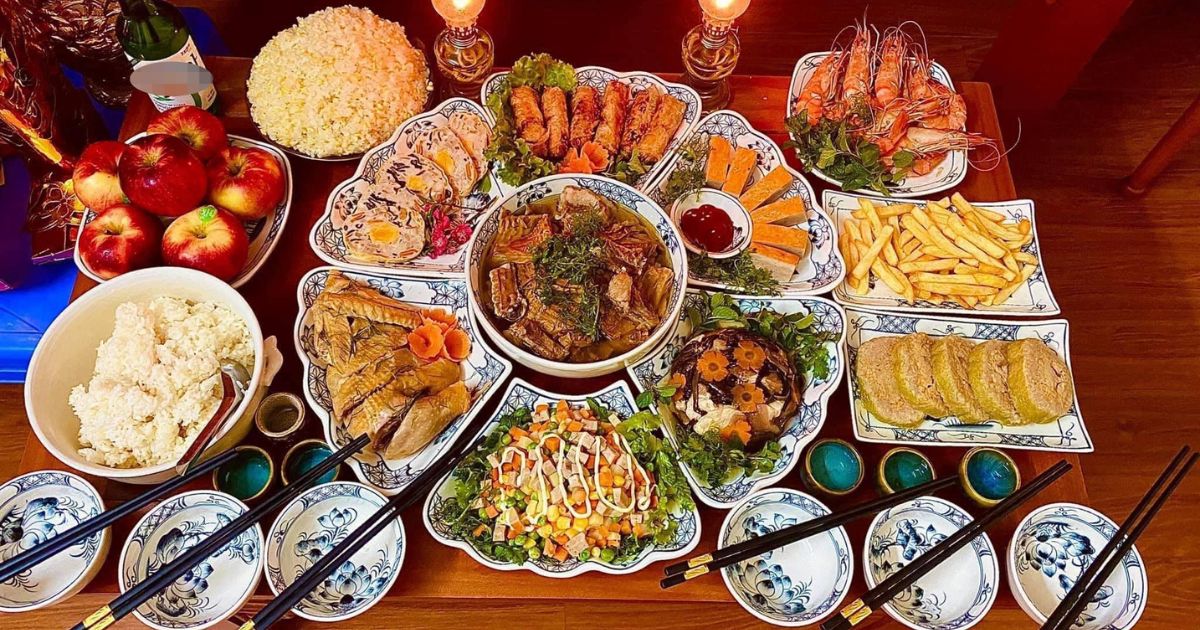
Offerings to Ancestors
During Tết, food offerings play a crucial role in honoring ancestors. Altars are adorned with various dishes, including Bánh Chưng, fruits, sweets, and other traditional Vietnamese Lunar New Year food. The act of offering food to ancestors is a way to express gratitude and maintain a connection with family members who have passed away. This important custom is an integral part of the Tết celebration and a sign of respect. Families believe that by offering these foods, they are ensuring the blessings of their ancestors for the new year, thus making offerings of Vietnamese Lunar New Year food an important part of their tradition.
The elaborate and thoughtful presentation of these offerings is a testament to the importance that Vietnamese families place on respecting their heritage and traditions. The ritual of preparing and offering the food is a sacred act, deeply intertwined with spirituality and family values. The food not only nourishes the living but also connects them with their lineage. The practice reinforces the connection with ancestors and ensures they are also a part of the celebrations, thus making the offering of Vietnamese Lunar New Year food is a sacred duty.
Sharing Meals with Family
Tết is a time for family reunions, and sharing meals together is a central aspect of this tradition. The meals are carefully prepared, and every dish is served with love and care. Eating together promotes bonding and reinforces family connections. The family meals during Tết are not just about nourishment; they are a time for connection, laughter, and making memories, the act of sharing Vietnamese Lunar New Year food brings families closer together.
The elaborate feasts and communal dining highlight the importance of family in Vietnamese culture. Every dish is carefully prepared, representing the family’s best effort and showcasing the richness of their culinary traditions. The sharing of meals serves as a reminder of the ties that bind the family together. Through this practice, families reinforce their love and commitment to each other. The act of sharing Vietnamese Lunar New Year food is a beautiful expression of love, connection and togetherness.
Gift-Giving of Food
Gift-giving is a common practice during Tết, and food, especially Bánh Chưng, Bánh Tét, and Mứt Tết, are popular gifts. These food items symbolize good wishes for the new year and are a gesture of hospitality and care. These popular items from the Vietnamese Lunar New Year food are given as gifts with a deep sense of goodwill. Gifts of these traditional foods represent a desire for the recipient’s good fortune and prosperity in the coming year.
The act of gifting these items demonstrates a sense of community and reinforces the social bonds. These gifts are carefully chosen and thoughtfully presented, reflecting the importance of relationships in Vietnamese society. The sharing of Vietnamese Lunar New Year food in this way strengthens family and social connections. The gifts go beyond the act of giving, they carry a deep cultural message of connection and good wishes.
Regional Variations of Tết Food
Northern Vietnam
In Northern Vietnam, the Tết feast often features Bánh Chưng as the centerpiece, complemented by pickled onions (Hành Muối) and boiled chicken. These dishes represent the rustic charm and the straightforward approach of Northern Vietnamese cuisine. While many of the same traditions are followed the specific preparations of Vietnamese Lunar New Year food differ slightly from other parts of the country. The focus is on simple yet flavorful foods that have a profound sense of tradition, while still offering a rich and satisfying celebration.
The boiled chicken is a symbol of respect and is often served whole to represent unity and completeness. Pickled onions provide a sharp and tangy flavor that cuts through the richness of other dishes. These traditional Vietnamese Lunar New Year food are a testament to the unique culinary heritage of Northern Vietnam. The careful preparation of these dishes and ingredients demonstrate how deeply engrained the preparation of Tết foods are in the culture and traditions of the region.
Central Vietnam
In Central Vietnam, the Tết celebrations showcase spicier dishes like Nem Chua (fermented pork) and Bánh Tét with different fillings. These reflect the bold and flavorful preferences of the region. The regional variations in Vietnamese Lunar New Year food demonstrate the diversity of Vietnamese cuisine. This region is known for using a more robust flavor profile including a bit more spice than is common in the northern region of Vietnam.
The spicy dishes add an exciting dimension to the Tết feast, catering to the local palate. The variety of fillings in Bánh Tét offer a delightful culinary experience and highlight the local creativity. These dishes reflect the strong cultural identity of Central Vietnam, and the variations in Vietnamese Lunar New Year food demonstrate the creativity and passion of the cooks in that region. The emphasis on spice and unique fillings add to the complexity and diversity of the traditional celebrations of Tết.
Southern Vietnam
Southern Vietnam’s Tết feast often highlights Thịt Kho Tàu, a rich braised pork dish, and vibrant candied fruits. These dishes reflect the warm and sunny climate of the region and the abundance of fresh produce. There is a focus on fresh ingredients and rich flavors, making for a truly delicious celebration with Vietnamese Lunar New Year food. The emphasis is on creating a feast that is not only delicious but visually appealing, reflecting the region’s unique culture.
The colorful and varied candied fruits are a delightful addition to the Tết feast, adding a sweet and festive element. The braised pork is slow-cooked and savory, showcasing the rich flavors of Southern Vietnamese cuisine. The variations in Vietnamese Lunar New Year food showcase the vibrant nature and diverse culture of the region and the strong desire to celebrate and honor traditions.
Modern Influences on Tết Food
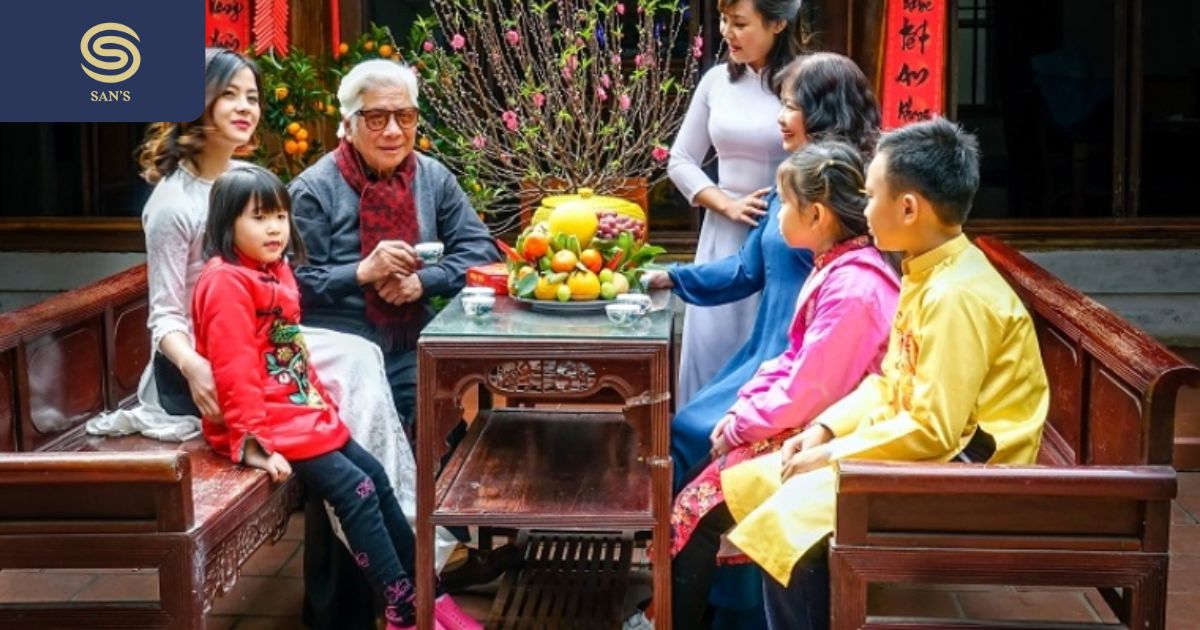
Fusion Dishes and Convenience Foods
Modern lifestyles have increasingly influenced traditional Vietnamese Lunar New Year food preparation. Many families now embrace fusion dishes, blending traditional flavors with modern cooking techniques. Convenience foods have also made their way into the Tết menu, offering quicker and easier options for busy families. While this has made the preparation a bit more convenient it also comes with some loss of tradition.
The availability of convenience foods has eased the burden of preparing for the holiday, but there is a risk of diminishing the traditional aspects of Tết. This highlights the challenge of balancing the need for modern convenience with the desire to maintain cultural traditions. As new generations grow up, it will be important for families to continue to share traditions and family recipes to keep this aspect of Vietnamese Lunar New Year food alive. This will be key in maintaining the richness of the traditions.
Preservation of Tradition
Despite the influences of modernity, there is a concerted effort to preserve the traditional aspect of Vietnamese Lunar New Year food. Families are increasingly trying to balance the need for convenience with the preservation of the rich cultural heritage. The value and understanding of traditions is being passed down from one generation to the next. This careful balance will help to ensure these traditions are alive and vibrant for many years to come.
The younger generations are learning about the significance of these traditional dishes, ensuring that the cultural heritage is passed down. Many families continue to prioritize traditional methods of preparation, even if it is more time consuming, reinforcing the importance of preserving cultural practices. Preserving the traditional elements of Vietnamese Lunar New Year food is a conscious choice to maintain the link to the past while still adapting to the modern world.
Significance of Food in Tết Celebrations
The significance of Vietnamese Lunar New Year food extends far beyond mere sustenance; it is the heart and soul of the Tết celebration. Food plays a central role in expressing cultural values, family bonds, and the hope for a prosperous new year. The act of preparing and sharing traditional dishes is a testament to the enduring importance of culture and tradition in Vietnam. The elaborate care that goes into these food preparations highlights the strong tradition and values of the culture.
The aromas that fill the home during this time are not just appetizing but are also imbued with tradition and memory. Each dish holds special meaning and adds to the sense of connection and shared cultural identity. The food of Tết reflects the richness and complexity of Vietnamese culture. The significance of Vietnamese Lunar New Year food is undeniable, showcasing its central role in bringing families together during this important festival.
—
Here is the “”. Wishing you a delightful trip to Vietnam! If you’re visiting Vietnam and the capital, Hanoi, you can book a room at San Hotel at the best prices here!
Follow us on Facebook to get the latest travel updates daily: San Hotel Series



